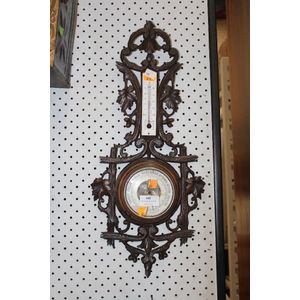Regency Rosewood Card Table with Brass Inlays
You must be a subscriber, and be logged in to view price and dealer details.
Subscribe Now to view actual auction price for this item
When you subscribe, you have the option of setting the currency in which to display prices to $Au, $US, $NZ or Stg.
- Regency Period - The Regency period in English furniture design refers to the period when King George III, was declared unfit to rule in 1811, and his son ruled as proxy as Prince Regent, until 1820, and then, after the death of his father as George IV until his death in 1830. The Regency period was preceded by the Georgian period (George I, George II, and George III: 1714 - 1811), and was followed by the William IV period, which only lasted until 1837 when William IV died as was succeeded by Queen Victoria.
- Circa - A Latin term meaning 'about', often used in the antique trade to give an approximate date for the piece, usually considered to be five years on either side of the circa year. Thus, circa 1900 means the piece was made about 1900, probably between 1895 and 1905. The expression is sometimes abbreviated to c.1900.
- Rosewood - A dense timber that varies in shade to very light brown to almost black. When rosewood is cut and sanded the colour of the timber will turn black, and after polishing and exposure to daylight, the surface will gradually lighten over time to light brown with black streaks.
The name comes from the odour emanating from the timber when it is planed, sanded or cut.
Rosewood was very popular for use in Victorian furniture in the second half of the 19th century, and at that time most of the rosewood was imported from Brazil. However it also grows in India and Indonesia.
It is used in the sold for chairs and table legs, but for carcase furniture such as side cabinets and bookcases, and for table tops it is always used as a veneer.
This item has been included into following indexes:
-
tables, purpose or type
- chess 249
- pedestal, side and centre 143
- tables, small, period or style
Visually similar items

An Australian sterling silver two-handled cup, 1907/8 with maker's mark for Stokes & Sons, the plain bowl on a stepped circular base with two acanthus-capped scroll handles. Provenance: Stokes Australasia limited; hallmarked to bowl and also marks to base.

Antique French carved Black Forest barometer and thermometer, 50 cm high

Lalique Marguerite daises float bowl, of shallow circular form, decorated with a raised border of daises, etched signature and France to base, a/f, diameter 36 cm

A chronograph Nicole Nielsen & Co gold pocket watch crown wind, half hunter, circular enamelled white dial with Roman numerals, subsidiary seconds dial at nine, signed case, dial and movement, 18ct gold case, hallmarked London 1887, with blue enamel Roman
